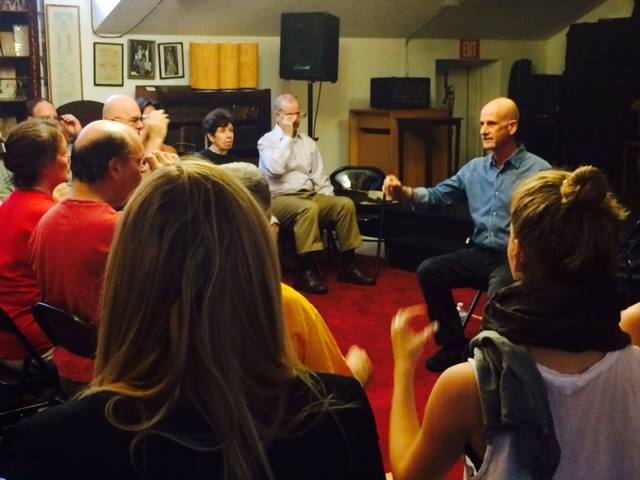The Alexander Technique and the floor.
One of my students, who I’ll call Ellen, has suffered with post traumatic stress disorder most of her life. Many modalities have helped her, but she hadn’t come across the Alexander Technique until recently. She now realizes that, for her, it was a missing link. Everything else she’s done has focused on the mind side of the mind/body continuum. Although relaxation techniques and breath work had been helpful, the unique approach the Alexander Technique affords has been invaluable.
When Ellen came in for her initial lesson, her neck was held tightly, her arms held closely to her torso, as if for protection. Freeing her neck, and letting her arms separate from her torso led to a cascade of other “freeings” over the months she has studied the Alexander Technique.
After taking a hiatus from her Alexander lessons she told me her symptoms, including flashbacks, had returned. I asked her if anything had changed that might have caused this. After thinking awhile she told me she had recently taken a yoga class, and the symptoms seemed to have reemerged after the class. Towards the end of this yoga class the teacher had the participants lie on the floor, with their heads unsupported. (Ellen usually requires about six inches of books for constructive rest.) When I said to Ellen “in other words, you were in startle pattern for fifteen minutes”, it was like a light turned on. She realized that her body was sending a signal of danger to her brain, as we know that neurological signals often travel from the body to the brain. It didn’t take long for Ellen to begin her re-recovery.
The Alexander Technique and the therapist’s couch.
Yesterday another student, who I’ll also call Ellen, described a circumstance that took place in her therapist’s office. Ellen was sitting at the edge of the couch, and talking. Feeling a bit tired, she decided to lean back. As she described, her feet no longer reached the floor, she could no longer feel her sit bones, her neck was poking forward, her head was back and down, and her breathing was more rapid and shallow. She noticed that this physical position affected her viewpoint about what she was saying. She moved back to the edge, thought her Alexander directions, and saw her issue in a different light. We have no idea if the therapist noticed any of this.
Mark Josefsberg-Alexander Technique NYC
(917) 709-4648
Image courtesy of FreeDigitalPhotos.net-Red Sofa in the Room by Feelart











I have found that AT has been extremely helpful to me in my own experience with trauma therapy. Because I know I can undo my fear responses, it has been safer for me to look at the triggers and even to sit with them without being in too big a hurry to undo them. Having more accurate kinesthetic awareness is helping me to notice the subtle and not so subtle differences between my physicalized responses and the ways I define the emotional experiences associated with them. AT has helped me feel safe enough to track the responses to their sources and to reason my way to the best course of action, which in many cases is no reaction, because it’s just “Nervous Nellie” striking again.
Thank you so much for your comment, Gaynelle. Please add anything thing you want at any time, and continued success on your journey. The Alexander Technique is truly wonderful in so many ways.
Wow, Mark. So interesting. Thanks for this sensitive, informative post. Very important for yoga teachers.
Thank you so much, Joan. I’m glad you think it’s useful. Alexander Technique and yoga can be such a great fit.